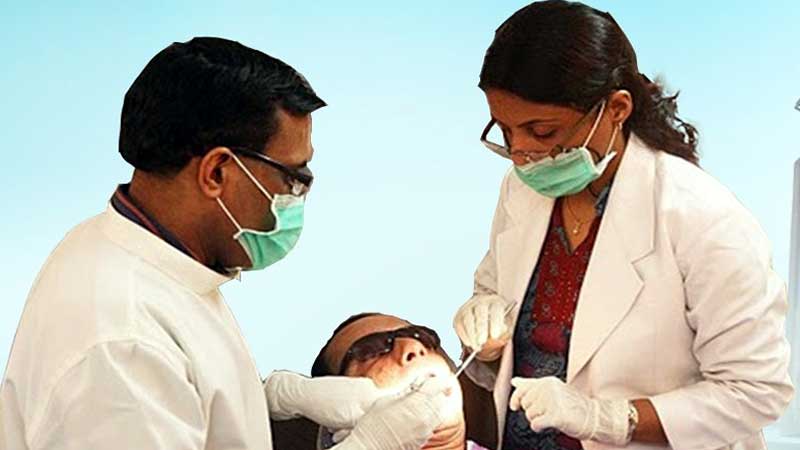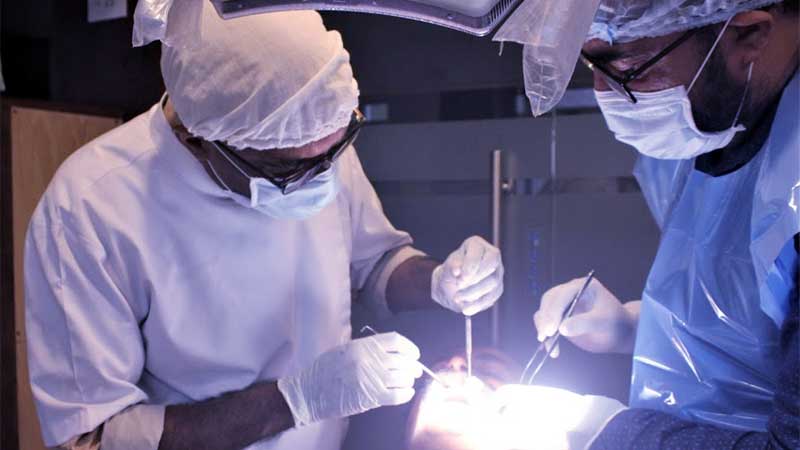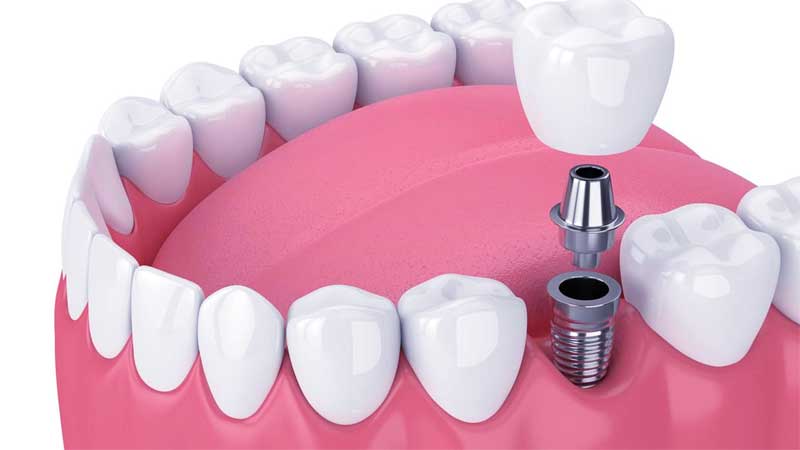
Pre Procedure
The pre-procedure visit is for consultation with our dentist along with a clinical examination, OPG and CBCT (3D) imaging at our centre. In this visit, we clearly evaluate the status of existing teeth and jawbones, followed by clinical evaluation and finalisation of the treatment plan. We will also be taking you through relevant presentations detailing the implant treatment procedures during this visit, after which we will be able to answer your questions about the procedures.
After the treatment plan is finalised, you must have a medical exam by a physician at the hospital attached to our centre to certify your fitness for dental implant surgery under local or general anaesthesia.
Procedure
Days 1 & 2: Extractions of teeth followed by immediate implantation in the same sitting. Intraoperative CBCT treatments will be performed to ensure that the implants are in the best possible position. We will proceed with impressions and related procedures to the prostheses fabrication immediately after the implant procedures. In full mouth implant procedures, the lower jaw extractions and implantation are usually accomplished on the first day, followed by the upper jaw extractions and implantation on the second day.
Days 2 & 3: Metal frame trial of the prosthesis - The prosthesis framework is evaluated for accuracy of fit, appropriate contour to faciltate oral hygiene access and the necessary balance of structural morphology for rigidity, strength.
Day 3 & 4: Wax trial of the prostheses - The wax trial will allow us to analyse several parameters that must be considered before the fixtures are processed, as well as provide the patient with a concept of how the final prosthesis will look and feel.
Days 4 & 5: The interim metal-acrylic prosthesis (fixed teeth over implants & / or teeth) will be cemented by the 4th or 5th-day treatment. The patient can start chewing food soon after this.
The intensive treatment phase is completed by the end of the first week.
Post Procedure
The patient should ideally be available for two or three visits during the second week of treatment. This is mainly for bite adjustments and minor occlusal corrections. We ask that the patient report for bite checks every 2 to 3 months if possible.
We place a lot of emphasis on a balanced bite because proper healing of the hard and soft tissues around the implants requires a stable and balanced bite with optimal bite loads. We also routinely make an immediate post-procedure OPG x-ray as a post-treatment record.
After 1 Year
After a year, we ask patients to return for an evaluation of bone and soft tissue healing, as well as bite stability. Generally, the hard and soft tissues heal and settle down in a year after the implant surgery. We perform an OPG review and, if necessary, a CBCT (3D imaging) to ensure optimal bone healing.
If there is a considerable amount of shrinkage of the soft and hard tissues in and around the implant surgery sites, the interim metal-acrylic prostheses may have to be modified and contoured with the help of composite resin fillers to cover the receded areas or removed and replaced with the permanent prostheses. However, if there is not much shrinkage of the hard and soft tissues, and if the patient is comfortable overall, there is no need to change the interim prostheses immediately. Depending on the state of the interim prosthesis at the time, a change of prosthesis can be made after 2 to 3 years or more.
Later Years
We request patients to report once in 6 months or at least once a year for bite checks, oral prophylaxis (professional dental cleaning) and maintenance. We generally make OPG X-rays once a year during the first 3 postoperative years, and after that, the OPGs are made once in 2 years. These OPGs will provide us with a clear picture of the bone response around the implants, as well as aid in early intervention if necessary. Proper maintenance of the implant-supported prostheses will ensure that they survive very well over years adding quality to the patient's life.



